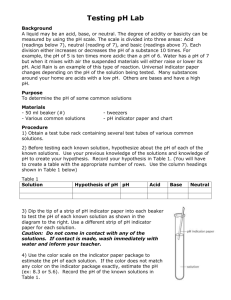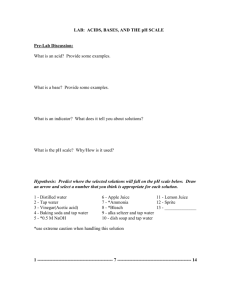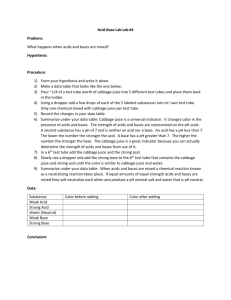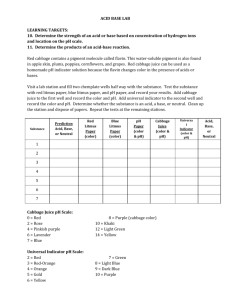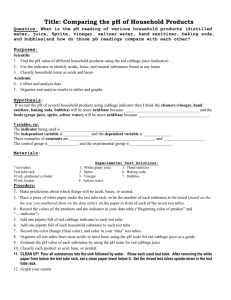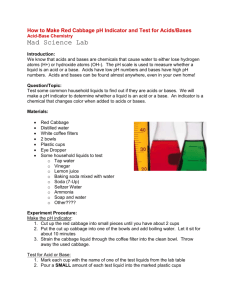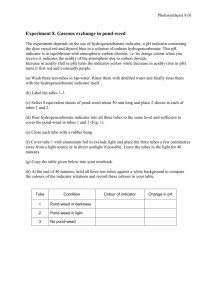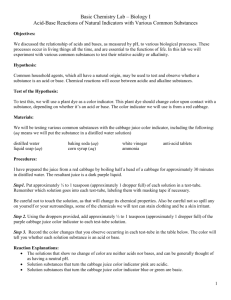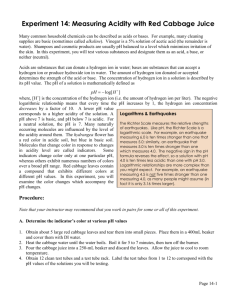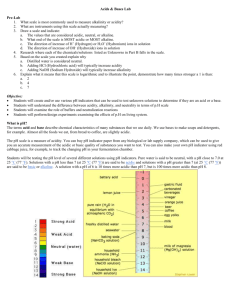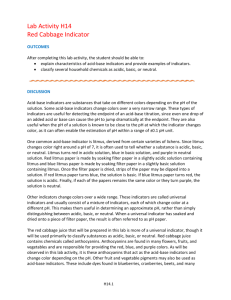pH Determination of Household Products
advertisement
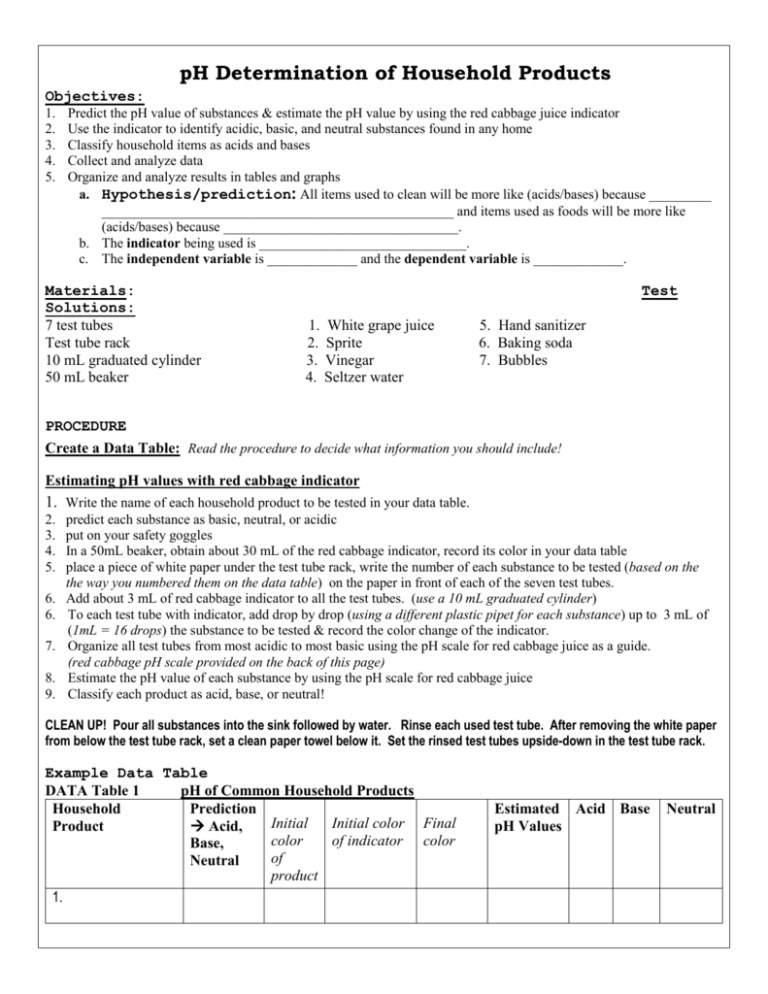
pH Determination of Household Products Objectives: 1. 2. 3. 4. 5. Predict the pH value of substances & estimate the pH value by using the red cabbage juice indicator Use the indicator to identify acidic, basic, and neutral substances found in any home Classify household items as acids and bases Collect and analyze data Organize and analyze results in tables and graphs a. Hypothesis/prediction: All items used to clean will be more like (acids/bases) because _________ ___________________________________________________ and items used as foods will be more like (acids/bases) because __________________________________. b. The indicator being used is ______________________________. c. The independent variable is _____________ and the dependent variable is _____________. Materials: Solutions: 7 test tubes Test tube rack 10 mL graduated cylinder 50 mL beaker Test 1. White grape juice 2. Sprite 3. Vinegar 4. Seltzer water 5. Hand sanitizer 6. Baking soda 7. Bubbles PROCEDURE Create a Data Table: Read the procedure to decide what information you should include! Estimating pH values with red cabbage indicator 1. Write the name of each household product to be tested in your data table. 2. 3. 4. 5. 6. 6. 7. 8. 9. predict each substance as basic, neutral, or acidic put on your safety goggles In a 50mL beaker, obtain about 30 mL of the red cabbage indicator, record its color in your data table place a piece of white paper under the test tube rack, write the number of each substance to be tested (based on the the way you numbered them on the data table) on the paper in front of each of the seven test tubes. Add about 3 mL of red cabbage indicator to all the test tubes. (use a 10 mL graduated cylinder) To each test tube with indicator, add drop by drop (using a different plastic pipet for each substance) up to 3 mL of (1mL = 16 drops) the substance to be tested & record the color change of the indicator. Organize all test tubes from most acidic to most basic using the pH scale for red cabbage juice as a guide. (red cabbage pH scale provided on the back of this page) Estimate the pH value of each substance by using the pH scale for red cabbage juice Classify each product as acid, base, or neutral! CLEAN UP! Pour all substances into the sink followed by water. Rinse each used test tube. After removing the white paper from below the test tube rack, set a clean paper towel below it. Set the rinsed test tubes upside-down in the test tube rack. Example Data Table DATA Table 1 pH of Common Household Products Household Prediction Initial Initial color Final Product Acid, color of indicator color Base, of Neutral product 1. Estimated Acid Base pH Values Neutral 2. DATA and ANALYSIS 1. Create and complete your data table 2. Draw the test tubes with the indicator 3. Draw the test tubes with the indicator and the test substance 4. Graph your result from the most acidic to the most basic ANALYSIS Questions - Use these questions to write your conclusion paragraph (do not submit written answers to these questions, they should be used to help write a conclusion paragraph) 1. The main idea of this lab was … 2. It is important to learn about acids and bases because … 3. When you added vinegar to red cabbage indicator, the indicator changed color from _______________ to ___________. 4. Why and when does red cabbage juice changes from purple to other colors? 5. List the substances you tested from most acidic to most basic. 6. The data shows that most foods are mostly __________ because … 7. Cleaning supplies are mostly __________ because... Red Cabbage pH Scale approximate pH: 2 4 6 8 10 12 color of extract: red purple violet blue blue-green green Your Lab Report Should Include: 1. Data Table 2. Drawings of test tubes 3. Graph 4. Conclusion Paragraph (based on your predictions and actual data from your lab, don’t forget to use the analysis questions)
